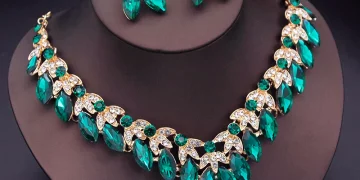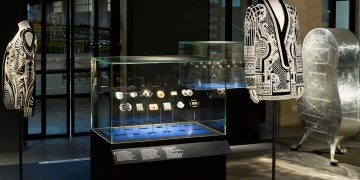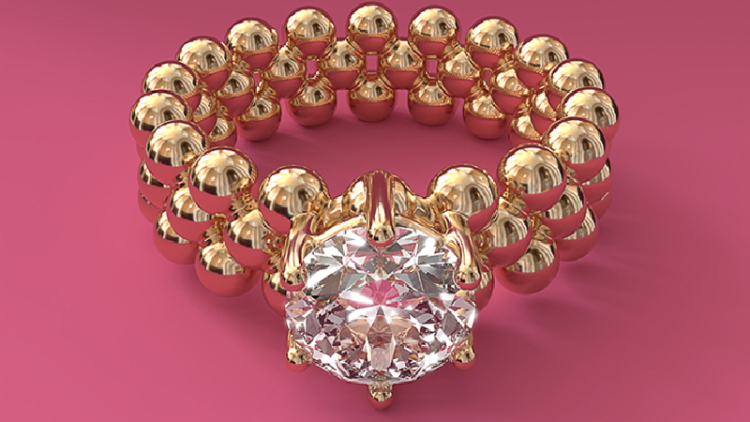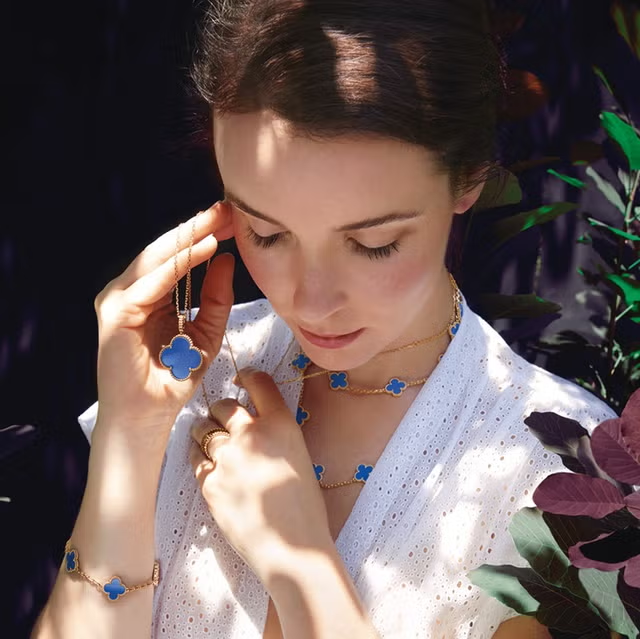Abstract
In the luxury jewelry industry, a designer’s personal style is not only a key element of their creative identity but also a critical factor in shaping the market positioning and consumer recognition of their brand. A designer’s vision, aesthetic preferences, and unique approach to design serve as the cornerstone for the jewelry collections they create. As the jewelry market becomes increasingly saturated with diverse offerings, consumers are looking for more than just the products themselves—they are drawn to the stories behind the designs and the personal touch that a designer brings to their work. This article explores how a designer’s personal style influences their brand’s positioning in the market, the emotional connection they establish with consumers, and the long-term loyalty they cultivate. By examining successful case studies and the psychology behind branding in the jewelry industry, we shed light on how a designer’s unique voice shapes both the identity and success of their brand.
1. Introduction
The luxury jewelry market is highly competitive, with an ever-growing array of designers and brands vying for consumer attention. Amidst this competition, one of the most powerful ways for a jewelry brand to stand out is through the unique vision of its designer. A designer’s personal style is not just an aesthetic choice—it is a reflection of their values, background, and creative influences. It serves as the backbone of the brand’s identity and plays a crucial role in how the brand is positioned in the market and how it is perceived by consumers.
When a designer’s personal style resonates with a particular segment of the market, it creates a sense of exclusivity and recognition that helps build a loyal customer base. Whether through the use of specific materials, techniques, or design philosophies, a designer’s distinctive touch can become synonymous with the brand itself, making it immediately recognizable in a crowded marketplace. This article explores the interplay between a designer’s personal style and the way jewelry brands position themselves in the market. It also looks at how this influence shapes consumer behavior and brand loyalty.
2. The Role of Personal Style in Jewelry Design
2.1 Defining Personal Style: More Than Just Aesthetic Choices
A designer’s personal style encompasses more than just the visual aspects of their work—it reflects their broader philosophy, cultural influences, and unique perspective on beauty. This personal style often manifests in various ways:
- Design Elements: These include signature motifs, shapes, and themes that recur in the designer’s work. For instance, certain designers might consistently use nature-inspired patterns, like floral designs or animal motifs, while others may favor geometric shapes or minimalist forms. The consistent use of these elements helps solidify the designer’s signature style.
- Material Choices: The materials selected by a designer also play a crucial role in defining their style. Some designers may opt for unconventional materials, such as wood, enamel, or recycled metals, while others focus on more traditional materials like gold, platinum, and diamonds. The materials chosen by the designer often communicate deeper values, such as a commitment to sustainability or a preference for luxury and rarity.
- Techniques and Craftsmanship: The way a designer approaches craftsmanship—whether through intricate handcrafting, innovative technological processes, or minimalist construction—adds to the uniqueness of their style. For example, some jewelry designers are known for their precision and fine detail, while others embrace more organic or experimental techniques.
2.2 The Designer as Brand Identity
In the world of luxury jewelry, the designer is often seen as the brand itself. The designer’s personal story, background, and creative vision become intertwined with the identity of the brand. For many consumers, purchasing a piece of jewelry is not just about acquiring a beautiful object; it is also about aligning with the designer’s philosophy and values.
- Brand Storytelling: Designers often infuse their personal experiences, cultural heritage, or artistic influences into their designs, which helps shape a compelling narrative around the brand. A designer’s story—whether they are self-taught, from a family of jewelers, or influenced by a particular art movement—adds depth to the jewelry’s meaning and attracts consumers who resonate with that story.
- Celebrity Designers: The recognition of a designer’s personal style often leads to their own celebrity status, which can enhance the desirability and exclusivity of their jewelry. Well-known designers like David Yurman, Alexander McQueen (for his collaborations with jewelry brands), and Jean Schlumberger for Tiffany & Co. are not just creators; they are symbols of taste, style, and luxury in their own right. Their name and personal aesthetic lend instant recognition and value to their collections.
3. Market Positioning and Consumer Appeal
3.1 Positioning Based on Design Aesthetic
A designer’s personal style is directly linked to how their brand is positioned in the market. The designer’s aesthetic vision often defines the target demographic and communicates to consumers what the brand stands for. For example, if a designer is known for avant-garde, unconventional designs, their brand may be positioned as edgy and innovative, appealing to consumers who seek bold, unique pieces. Conversely, a designer with a more classic, timeless style might position their brand as elegant and sophisticated, attracting consumers who prioritize heritage and longevity in their jewelry.
- Targeting Niche Markets: Designers with distinct personal styles often target specific market segments. A designer whose work features bohemian influences, for example, may appeal to consumers who value individuality and self-expression. On the other hand, a designer with a refined, luxurious aesthetic may attract high-net-worth individuals seeking exclusivity and craftsmanship.
- Luxury vs. Accessible Luxury: Some designers manage to balance both high-end luxury and accessible luxury in their collections, allowing their personal style to resonate across different price points. A designer like Monica Vinader, for example, offers pieces that have the aesthetic quality of fine jewelry but at a more accessible price, enabling them to attract a broader consumer base.
3.2 The Role of Branding in Consumer Recognition
A designer’s personal style helps shape the overall brand identity, which is crucial for consumer recognition. A brand’s visual identity—logos, packaging, advertising, and even store design—often reflects the designer’s creative direction and style. Strong branding elements make it easier for consumers to identify and remember the brand, building a sense of loyalty and trust.
- Consistency Across Platforms: A designer’s personal style should be consistent across all touchpoints, from the design of the jewelry itself to the way it is marketed. For example, if a designer’s style is minimalist and understated, their marketing materials, website design, and even store layout should reflect this aesthetic. The consistent presentation of a brand helps consumers build an emotional connection to it, which is a critical factor in fostering long-term loyalty.
- Collaborations and Partnerships: Designers often collaborate with other brands or celebrities, which can further enhance their market positioning. When a designer’s personal style aligns with a well-established brand or influential public figure, it can elevate their profile and introduce their creations to a wider audience. This kind of strategic partnership amplifies the designer’s narrative and deepens consumer recognition.

4. Case Studies: How Personal Style Shaped Iconic Jewelry Brands
4.1 Cartier – Timeless Elegance and Innovation
Cartier, one of the most iconic jewelry brands in the world, owes much of its success to the vision and personal style of its designers, particularly Louis Cartier. Cartier’s design philosophy blends elegance with innovative techniques, making it a leading name in luxury jewelry. Known for its timeless designs and meticulous craftsmanship, Cartier’s personal style reflects sophistication and grandeur, which resonates with both traditional and modern luxury consumers. The brand’s ability to evolve while maintaining its classic aesthetic has positioned it as a market leader in the high-end jewelry space.
4.2 Bulgari – Bold, Colorful, and Modern
Bulgari, under the creative direction of designers like Sotirio Bulgari and later his descendants, is renowned for its bold use of color and geometric designs. The brand’s personal style focuses on vibrant gemstones and strong, sculptural shapes, which differentiate it from other luxury jewelry houses. Bulgari’s market positioning as a brand that combines Italian glamour with bold, artistic expression has helped it carve out a distinctive niche. Its signature style appeals to consumers seeking bold luxury and modernity in their jewelry.
4.3 Anna Hu – Couture and Individuality
Anna Hu is an example of a designer whose personal style has been instrumental in shaping her brand. Known for her one-of-a-kind couture pieces, Hu blends Eastern and Western influences in her designs, often incorporating rare gemstones and intricate detailing. Her personal philosophy emphasizes the creation of pieces that tell a unique story, which resonates with high-net-worth individuals who seek bespoke luxury. By maintaining a focus on individuality and craftsmanship, Hu has successfully positioned her brand as a symbol of rare, personalized luxury.
5. Conclusion
In the luxury jewelry industry, a designer’s personal style is far more than just an aesthetic preference—it is a powerful tool for market positioning and consumer recognition. The distinct vision and creative direction of a designer can shape the identity of a brand, attract specific consumer segments, and foster emotional connections with buyers. Through careful attention to detail, consistency, and a strong personal narrative, designers can create jewelry that not only meets aesthetic desires but also fulfills deeper emotional and cultural needs. By understanding the influence of personal style, designers can position their brands effectively in the competitive luxury market and build lasting consumer loyalty.
















































